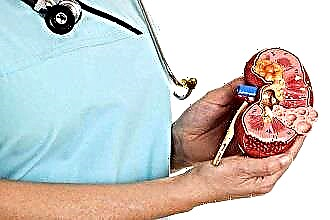The mechanism of the analgesic effect of acetylsalicylic acid
 The active ingredient of "Aspirin" - Acetylsalicylic acid non-selectively inactivates the enzyme cyclooxygenase (COX), which is involved in the formation of inflammatory mediators.
The active ingredient of "Aspirin" - Acetylsalicylic acid non-selectively inactivates the enzyme cyclooxygenase (COX), which is involved in the formation of inflammatory mediators.
Violation of the integrity of body cells under the influence of internal or external conditions is a trigger factor. After damage to the phospholipid layer of the membrane in the presence of lipolytic enzymes, arachidonic acid is released, which triggers the inflammation process. Due to interaction with COX, the acid is transformed into prostaglandins and thromboxane.
Effects of the breakdown products of arachidic acid:
- vasodilation (dilation of arterioles);
- narrowing of venules and obstruction of the outflow of fluid from the focus of inflammation;
- increased permeability of the vascular wall;
- increased chemotaxis (migration to the inflammation focus) of leukocytes;
- decrease in the threshold of sensitivity of pain receptors to stimuli.
The use of "Aspirin" as an anti-inflammatory agent is based on blocking the initial phase of the process, through the effect on COX. The mechanism of the drug's analgesic action is based on:
- suppression of the phases of the inflammatory process (hyperemia, exudation, capillary permeability and edema);
- inhibition of hypothalamic centers of thermoregulation and general sensitivity;
- an increase in the threshold for the reaction of nociceptors (pain) to stimuli;
- inhibition of the synthesis of bradykinin (a mediator of inflammation);
- antiplatelet action: improving the rheological parameters of blood helps to eliminate edema.
The analgesic effect of acetylsalicylic acid is dose-dependent - for anesthesia it is required to take 3-5 g of the drug.
The higher the concentration of the drug, the greater the risk of gastroenterological side effects.
Does Aspirin Relieve Headaches?
Cephalalgia is a nonspecific symptom of vascular, neurological, oncological and endocrine diseases. The mechanism of occurrence of violations is not fully understood. The main causes of headaches:
- vascular disorders;
- arterial hypertension (characterized by dull, throbbing pain in the back of the head);
- migraine (soreness of one half of the skull with irradiation to the temple or eye socket);
- neuroses;
- vegetative-vascular dystonia (VVD)
- pathology of the cervical spine (the predominant localization of pain is the back of the head);
- increased intraocular pressure (glaucoma);
- inflammation of the inner ear;
- dental diseases;
- overwork, lack of sleep, chronic stress;
- hunger, dehydration;
- overheating (heat or sunstroke);
- drinking alcohol the day before;
- volumetric formations of the brain (characteristic differences: pain increases in the morning, decreases in an upright position);
- infectious diseases accompanied by intoxication.
The analgesic effect of "Aspirin" is more pronounced in pain of mild and moderate intensity associated with a violation of the tone of the vascular wall, inflammation, increased blood viscosity, the action of ethyl alcohol metabolites.
Most commonly, ASA drugs are used in the treatment of hangover headaches. The unpleasant symptoms of an ethyl alcohol overdose are caused by the accumulation of under-oxidized alcohol conversion products (acetaldehyde).
Negative effects of the metabolite:
- forms covalent bonds with proteins of the membrane structures of the brain;
- slows down the processes of tissue respiration;
- activates the sympathetic nervous system;
- violates blood clotting.
The active ingredient "Aspirin" triggers the decomposition of acetaldehyde into carbon dioxide and water, normalizes the rheological parameters of the blood and eliminates the inflammatory component of the symptom.
To reduce the consequences of alcohol withdrawal syndrome, 500-1000 mg of ASA is prescribed 2-3 hours before drinking alcohol.
Acetylsalicylic acid helps against symptomatic headaches and temperature reactions caused by intoxication syndrome in infectious diseases.
Aspirin is included in the list of drugs of choice for the first stage of migraine therapy. Severe headache attacks are caused by aseptic vascular inflammation in the brain due to excess production of prostaglandins. A single dose of ASA 900-1000 mg for 2 hours eliminates moderate cephalalgia in 25% of patients, mild headache in 52%. It is optimal to combine "Aspirin" with antiemetic substances ("Metoclopramide", "Sturgeon") for a complex effect on the symptoms of migraine.
With the advent of other representatives of the NSAID class, the frequency of use of ASA for the purpose of pain relief has decreased. New drugs are characterized by more pronounced anti-inflammatory and analgesic effects ("Indomethacin", "Ibuprofen", "Diclofenac", "Meloxicam") without an ulcerogenic effect (ulceration).
In what cases is the drug prohibited?
Non-selective blockade of COX leads to dysfunction in many tissues due to a deficiency of thromboxane and essential prostaglandins. Aspirin is contraindicated for:
- hypersensitivity to salicylates and other components of the drug;
- uncontrolled bronchial asthma;
- a history of asthma attacks against the background of the administration of acetylsalicylic acid;
- acute ulcerative lesions of the digestive tract;
- hemorrhagic diathesis (hemophilia, vasculitis);
- decompensated renal or hepatic failure (due to impaired metabolism of the drug);
- chronic heart failure III-IV degree;
- children under 15 years of age (high risk of developing Ray's syndrome).
"Aspirin" in high doses (more than 150 mg / day) is prohibited in the first and third trimesters of pregnancy. Before 12 weeks of gestation, ASA increases the risk of having a baby with malformations of the facial skull, heart, neural tube, genitourinary system, and early spontaneous abortion.
In the third trimester, "Aspirin" is one of the factors of prolonged pregnancy and other disorders:
- weakness of labor;
- the birth of a child with a low weight;
- postpartum hemorrhage;
- earlier closure of the botallic duct;
- hemorrhagic complications in a newborn.
Low doses of "Aspirin" penetrate into breast milk during lactation, therefore, in the case of a single dose, it is not necessary to stop feeding.
Peculiarities of drug interactions and risks in case of comorbidities are presented in the table.
| Drugs with which it is prohibited to take "Aspirin" | Conditions in which the risk of complications increases |
|---|---|
|
|
Conclusions
Aspirin, like Ibuprofen, Paracetamol and Citramon, are mandatory components of every first-aid kit due to the low price and wide availability of drugs.The ulcerogenic, nephrotoxic and coagulopathic effects of high doses of ASA limit the intake of the medication. It is not recommended to consume more than 5 grams / day of "Aspirin" one time or to exceed the dosage of 100 / mg / kg / day with prolonged use. Chronic headaches with progressive dynamics that are not relieved by NSAIDs are a reason for contacting a specialist and thorough diagnosis.



